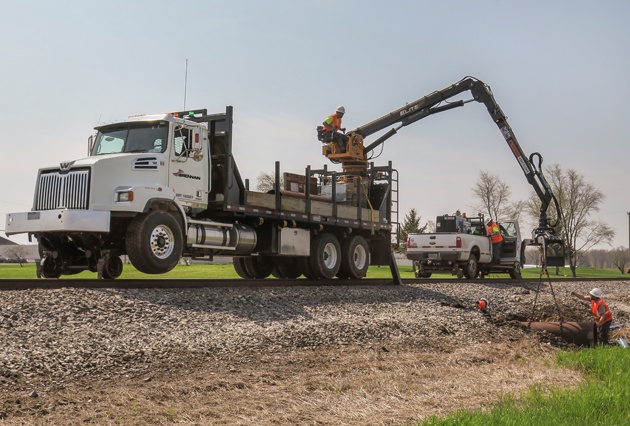Culvert Setup Made Easy: Step-by-Step Guide for Success
Installing culverts may appear like a simple task, but guaranteeing a successful outcome requires mindful planning and execution. From picking the suitable culvert dimension to incorporating correct water drainage steps, each action in the installment process plays a critical function in the performance and durability of the culvert system. By adhering to a methodical approach and paying interest to crucial details, the installation can proceed efficiently, lessening prospective concerns down the line. Keep tuned to discover the necessary actions and considerations that can make culvert installation a seamless and effective venture.
Selecting the Right Culvert Size
Selecting the proper culvert dimension is important for ensuring reliable water circulation and structural integrity in culvert installation tasks - Pad Construction. The size of the culvert straight impacts the flow ability of water via the framework. A culvert that is as well little can lead to flooding and overflow, while one that is too big may lead to lowered water velocity, potentially creating debris buildup and obstructions
To determine the best culvert size, factors such as the watershed location, top flow prices, and hydraulic efficiency need to be thoroughly considered. Estimations based on these parameters assist in picking a dimension that can effectively handle the anticipated water volume while reducing the danger of clogs and architectural failure.
It is vital to get in touch with design guidelines and requirements to make certain that the chosen culvert dimension fulfills the project needs and neighborhood guidelines (Pad Construction). By picking the best culvert dimension, task supervisors can enhance water circulation, avoid prospective problems, and enhance the total effectiveness and long life of the culvert installment
Preparing the Installment Site
Reliable culvert installment requires meticulous prep work of the installation website to guarantee ideal structural assistance and functionality. Before beginning the installation procedure, it is important to remove the website of any debris, vegetation, or obstructions that might hamper the culvert's placement.
In addition, it is essential to think about factors such as soil structure, groundwater levels, and ecological effects when preparing the setup website. Performing an extensive website evaluation can assist recognize any type of possible obstacles or risks that might influence the culvert's performance. By taking the time to prepare the setup site appropriately, you can help assure an effective culvert installment that fulfills structural demands and makes certain long-lasting functionality.
Putting the Culvert Properly

The quality at which the culvert is put is critical for keeping a correct incline for water flow. A gradual slope assists stop pooling and promotes efficient drain. Additionally, the culvert needs to be oriented properly to ensure that the inlet and outlet remain in the correct places. This alignment is essential for the culvert to operate properly in taking care of water flow.
Backfilling and Compacting the Soil
Proper backfilling and compaction of the soil around the culvert is necessary to guarantee stability and stop possible issues in the future. Once the culvert is correctly placed, the next critical step is to backfill the area around it with appropriate product.
After putting the backfill material, it is essential to small it in layers of consistent density. Making use of a compactor or official website a mechanical tamper, portable the dirt gently to avoid harming the check it out culvert. Compaction helps in minimizing the opportunities of settlement and guarantees consistent assistance around the culvert. It is essential to small the dirt uniformly on all sides of the culvert to keep its architectural stability.
Correct backfilling and compaction not just provide stability to the culvert but also help in preventing dirt erosion and maintaining the longevity of the culvert system.
Making Sure Correct Water Drainage Combination
Incorporating reliable drainage solutions plays an important function in the total performance and longevity of culvert installments. Proper drainage combination is crucial for taking care of water flow, avoiding disintegration, and making certain the structural stability of the culvert system. To achieve this, it is vital to develop a detailed drainage strategy that takes into consideration factors such as the volume of water anticipated, the topography of the area, and the kind of dirt existing.

Furthermore, incorporating features browse around this site like disintegration control actions, such as riprap or plant life, can additionally enhance the performance of the drainage system. By very carefully preparing and executing these water drainage solutions, culvert installments can function efficiently and hold up against the test of time.
Conclusion
In verdict, correct culvert installation is critical for preserving effective drainage systems. By picking the best culvert size, preparing the installment site, positioning the culvert correctly, backfilling and compacting the dirt, and making sure correct drainage integration, success can be achieved. Complying with these actions will assist make certain the long life and effectiveness of the culvert, ultimately contributing to the general success of the drain system.